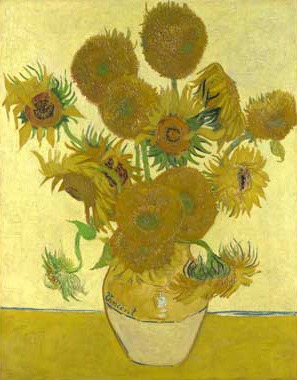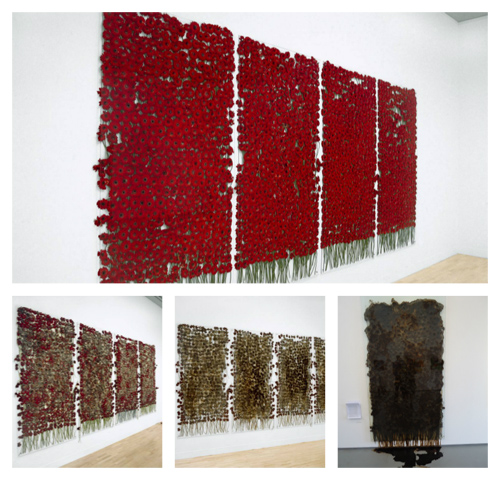From:TheBahamasWeekly.com
The Meaning of Flowers
By Susan Moir Mckay, BA, (HONS)
Jan 16, 2014 - 11:42:59 PM
I’ve been fighting shadows, in this case the shadow has a name, ‘Insurance Company’.
A little hidden clause in my contract means that although they will pay for water damage, they will not pay for wood that has rotted due to water damage. Apparently, I was supposed to telepathically know that there was water leaking behind the pristine white tiles, before it became ‘rotted wood’. To placate me, the smooth-voiced man on the phone from the insurance company, apologises for not calling me back, and notes that he will—as a special request—send another inspector to the property to reassess their denial of my claim.
The inspector is due to come tomorrow. I imagine his insurers-eyes gauging the property—our home—looking for signs of negligence … an easy reason to not pay.
Since returning to Scotland I have enjoyed the sublime pleasure of buying fresh cut flowers from our local shops. Lilies and roses, have brightened up our dark hallway; beautiful flowers and heady smell. The last bunch of flowers have not fared so well, winter time upon us, daylight has diminished to just a few hours, and the lack of natural light in our hall has meant that the eager buds have struggled desperately to bloom. They are on the bureau next to the constancy of the little hall light, but unconvinced by its artificial glare, have failed to flourish. The leaves have drooped and look strangely burned, the petals on a couple of the buds look like they have writhed against an unseen force – twisted and gnarled in a failed attempt to open fully. Their rich perfume, however, has insisted on blooming and won. Our hall smells delicious.
The flowers should have been discarded about 10 days ago. But I have been fascinated by their strange beauty and the significance of their suppressed hunger. I see in their unfulfilled story great metaphors of life, and I witness their part in the insistent cycle of nature.

Duchamp urinal
|
However, I imagine the Insurance inspectors eyes on this bouquet of half-lived life–awaiting death. I imagine his eyes scanning over the gnarled petals, the desperate buds and the burned leaves. Judging the dying flowers as ugly and somehow inappropriate, everyone knows to throw out withering blooms. Why keep flowers when they are not beautiful anymore?
Beauty is often synonymous with art. Or art synonymous with beauty. Contemporary art seems to fly in the face of this intuitive conclusion.
Marcel Duchamp irrevocably changed our understanding of the word ‘art’, when he famously submitted a bought urinal with the signature “R.Mutt” in 1912. At that moment every previously held idea and value about art was insidiously transformed and a brave new world opened up—a world where all things have the potential to be art—even a urinal. And if many things have the title “art”, then many things also have the potential to speak in the language of art: metaphor, meaning, symbolism, pathos, narrative, and nuance.
Art has so rarely been just about painting pretty pictures, but without the context of art history, looking at Van Gogh’s sunflowers, for example, with their vibrant and thick gestures of paint—it would be easy to smile at the painting of beautiful flowers. However, his work was not accepted at the time; it was not considered beautiful.
Nowadays, people are more familiar with this style and so simply see a nice picture of some sunflowers. But Van Gogh’s paintings were an aggressive introduction of something completely new. He expressed his vision of the sunflowers with absolute clarity, irrespective of what was considered acceptable/beautiful/art.

Sunflowers, Van Gogh
|
So by taking any object and calling it art, we have the potential for a moment like Van Gogh, or even Duchamp’s, where something can suddenly surprise us and reveal layers previously unrecognized, to find magic in the mundane. And in a world where so many things are either valued for their superficial appeal and status, or are easily discarded—this potential is enormously profound.
The flowers dying in my hall for example, to me are ‘art’. There is a deeper meaning to them. And I can contemplate their story and their relationship to me. They are ‘beautiful’ and ‘art’ because they are truthful and meaningful. They can be metaphor, symbolism or narrative. They are filled with pathos and nuance.
The artist Anya Gallacia has explored this relationship with flowers in her powerful works … preserve ‘beauty’ (1991-2003), in which she takes pretty Gerberas and lines them up in a glass frame and allows their slow decomposition in the gallery (see image below). The ultimate image of the Gerberas is a dark thick substance filling the glass and dramatically leaking out the bottom of the ‘picture’ onto the gallery floor. This is part of the existence of the Gerbera and is present even in the state of their fresh optimism when they are first presented. However the liquid decomposition is a deeper essence of the flowers. A potent substance that is intrinsic to the flowers, yet, normally unseen (everyone knows you throw flowers out before they die!) The flowers are the perfect medium, because they are so apparently ubiquitous—with happy associations of birthdays or anniversaries—Gallaccio shows us the deeper and complete nature of the flowers.
I believe fervently that we need this challenge in our contemporary society. We need to be challenged to look beyond the easy gloss of beautiful, pretty or perfect, in art as well as life, and we need to really strive to find the meaning, and the relationship of the things that are in our life. It is in this discernment and questioning, which I believe could bring a new awareness and integrity to our society. The beguiling white tiles in my bathroom were so deceptive, they held their dark rotting secret for many years. Not all things that look pretty are. And sometimes the nature of pretty things is to decompose and leave a foul substance on the floor.
Art has always pushed boundaries of what is acceptable and what shocks or titivates, but I would implore you to embrace what Duchamp brought to this era and allow yourself to look beyond the superficial nature of an object, or a piece of art, and find meaning and truth in the more challenging artworks of our time and feel the relationships, the stories, the pathos, the nuance. That is what art is supposed to do, pull us deeper into ourselves—and that is difficult with facile. Don’t be content with pretty.
I would love the insurance man to see with my eyes. To be able to see beauty in the difficult image of dying flowers—however, I rather suspect he will not! I will move the flowers into my studio to further contemplate their slow demise (and hope, nonetheless, that my claim is approved!)
About the Author: Susan Moir
Mackay is a professional artist with a B.A. (Hons) in Art and Design
from Edinburgh College of Art. She is an impassioned advocate of art and
has a deep abiding belief that art benefits individuals and
communities. Susan has travelled extensively, observing art in all its
forms and has invested much of her time to art education projects, as
well as developing her own art works and exhibitions. After twenty
years living in Freeport, Grand Bahama, Susan has returned to her
homeland, Scotland with her two children, Fiona and Dylan. She can be
reached at sozmac@yahoo.com
www.susanmoirmackay.wordpress.com

The artist Anya Gallacia has explored this relationship with flowers in her powerful works … preserve ‘beauty’ (1991-2003), in which she takes pretty Gerberas and lines them up in a glass frame and allows their slow decomposition in the gallery.
|
© Copyright 2014 by thebahamasweekly.com -